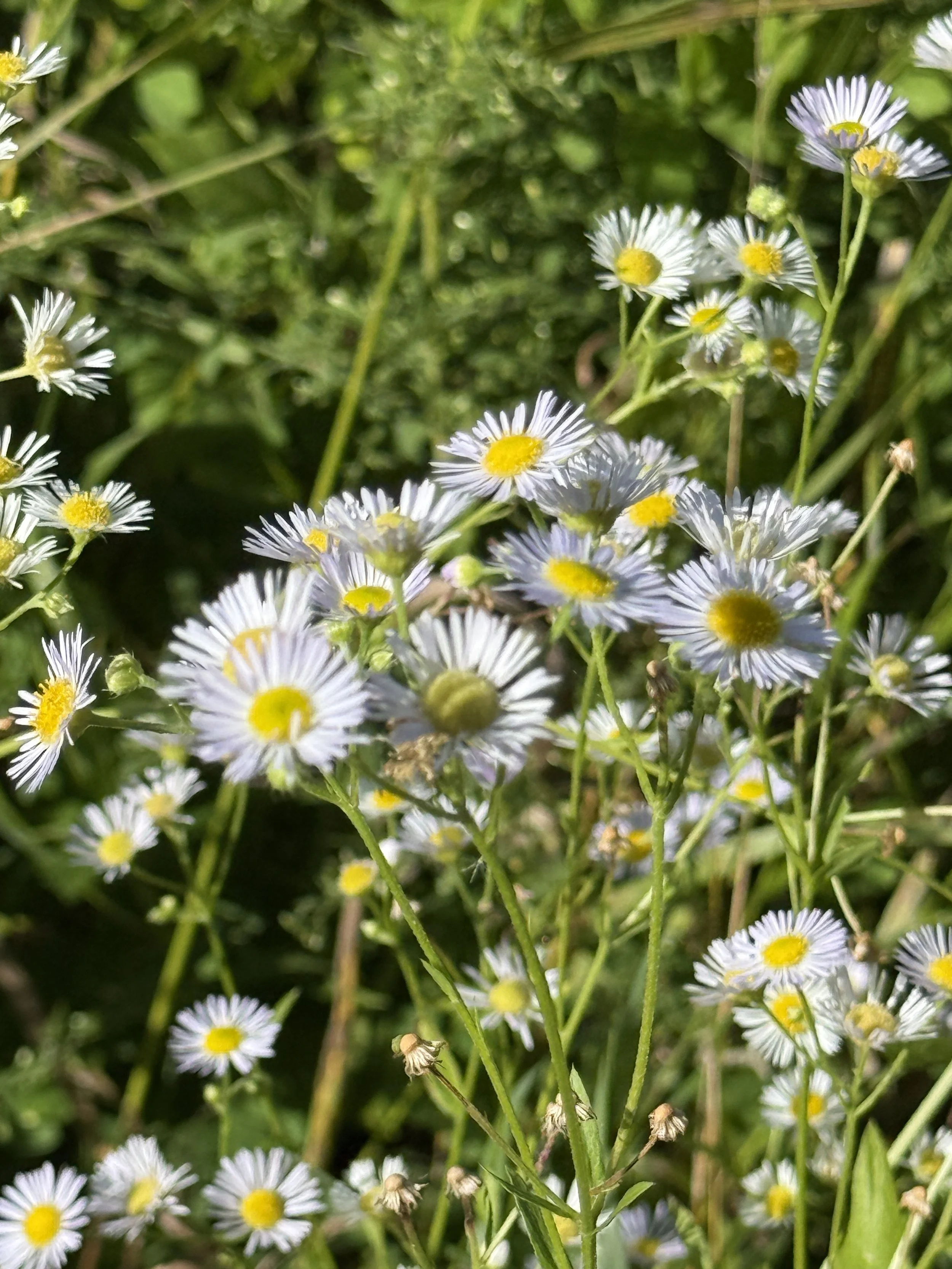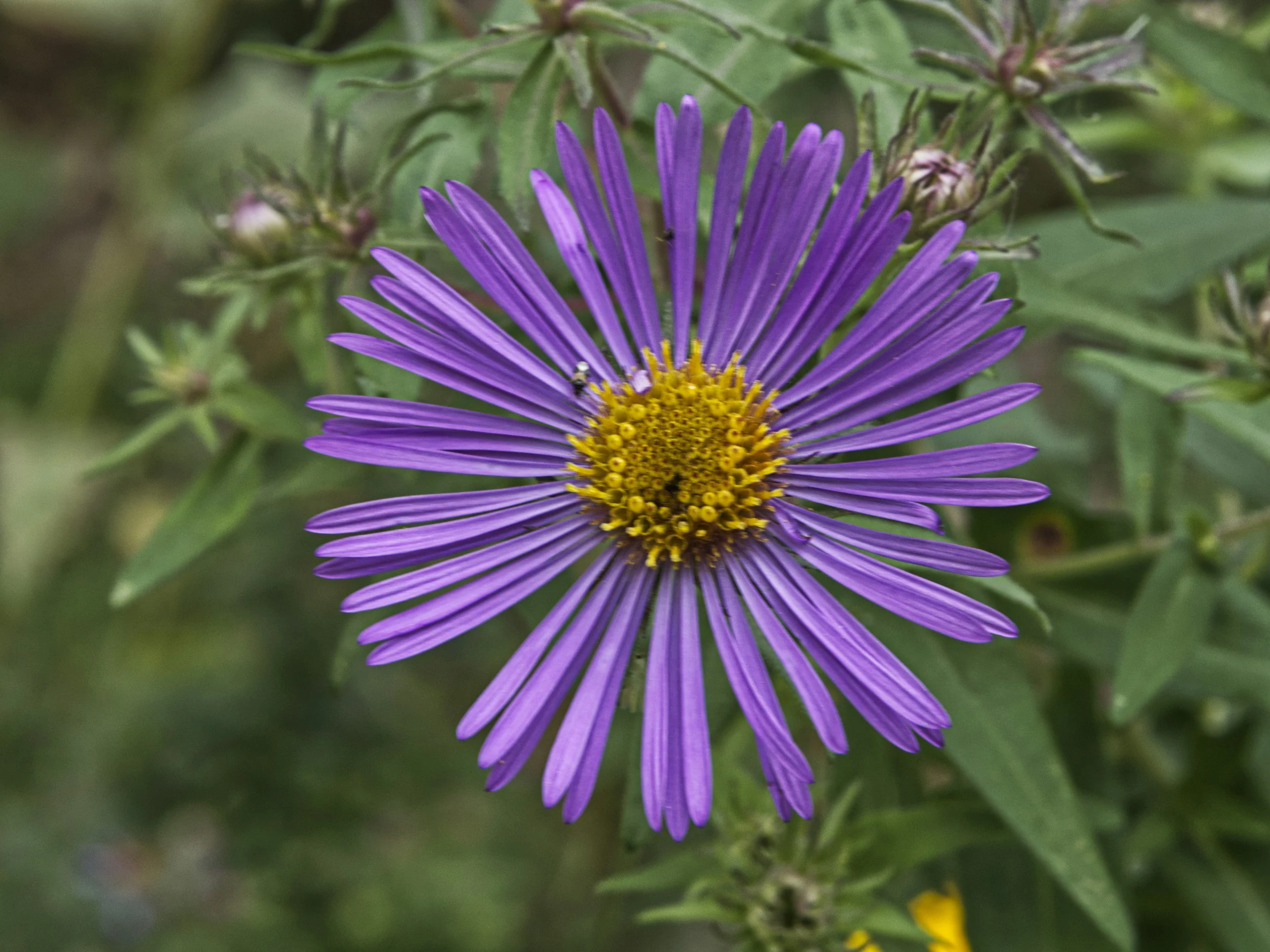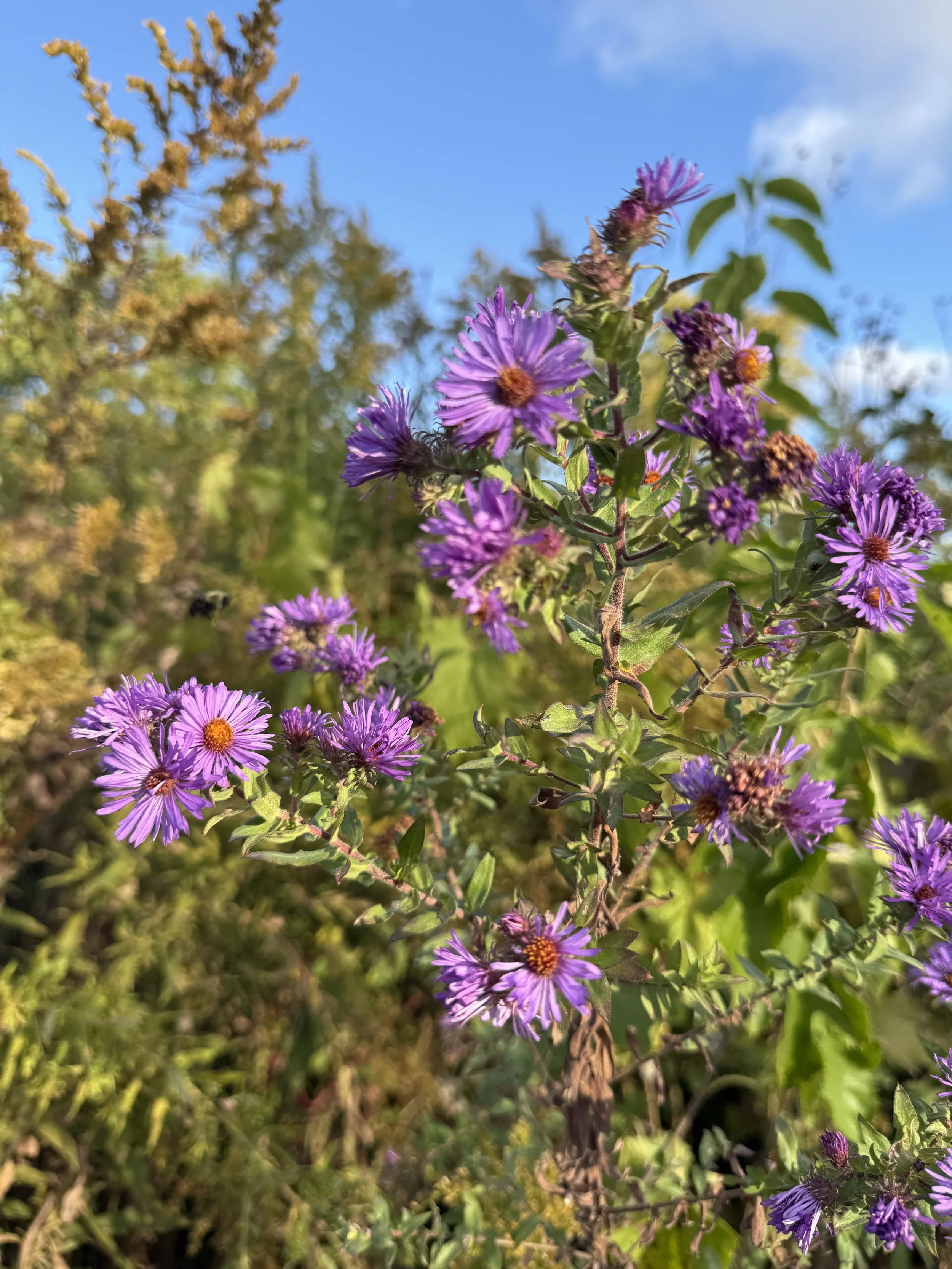October Native Plant of the Month: Asters (Symphyotrichum)
As autumn settles in and many summer blooms fade, asters step up to keep the garden alive with color. These hardy, star-shaped flowers bring cheerful purples, pinks, blues, and whites to the landscape just when you think the season is winding down. Even better — asters are native powerhouses that support pollinators, add texture, and return year after year with very little fuss.
Why We Love Asters
Late-season color: Asters bloom in September and October, extending your garden’s life long after most flowers have finished.
Pollinator magnet: Bees, butterflies, and other beneficial insects rely on asters for nectar and pollen as they prepare for winter.
Low-maintenance & reliable: Native asters are drought-tolerant once established and thrive in full sun to light shade.
Great for naturalizing: Plant them once and watch them return and spread gracefully, filling garden beds with vibrant fall color.
Beautiful Varieties to Try
New England Aster (Symphyotrichum novae-angliae): Tall, dramatic, and covered in purple to pink blooms. (native to Chicago)
Smooth Aster (Symphyotrichum laeve): Silvery foliage with soft lavender flowers. (native to Chicago)
Wood’s Aster (a cultivar group of Symphyotrichum dumosum): Compact and ideal for borders or smaller gardens. (native to North America)
Planting Tips
Timing: The best time to plant asters is in spring or fall. If you’re planting now, make sure they have a few weeks to root before the first hard frost.
Location: Full sun gives the best blooms, but many varieties tolerate partial shade.
Care: Once established, asters need little more than occasional watering and dividing every few years to stay vigorous.
Why Asters (Symphyotrichum) Matter in Native Landscapes
As a native perennial, asters fit beautifully into pollinator-friendly gardens and sustainable landscapes. They help support migrating butterflies like monarchs, provide nectar for late-season bees, and add natural diversity to your planting design. For high impact in the fall garden, pair asters with goldenrod (Solidago spp.)—their complementary colors and overlapping bloom times create a stunning, ecologically rich display that’s irresistible to pollinators.






